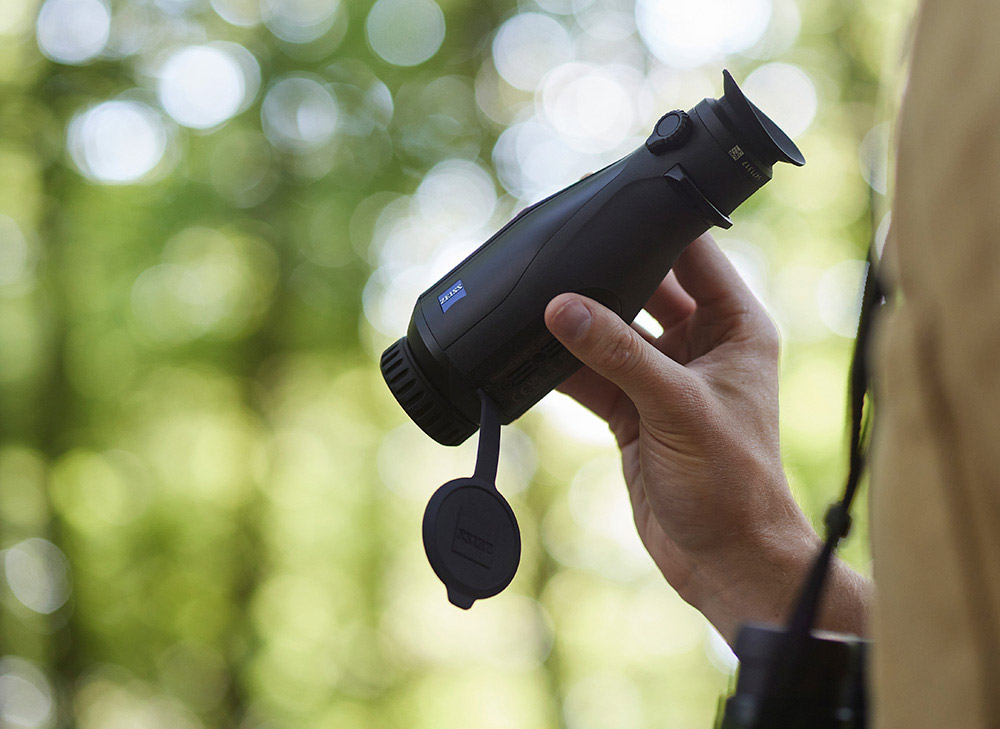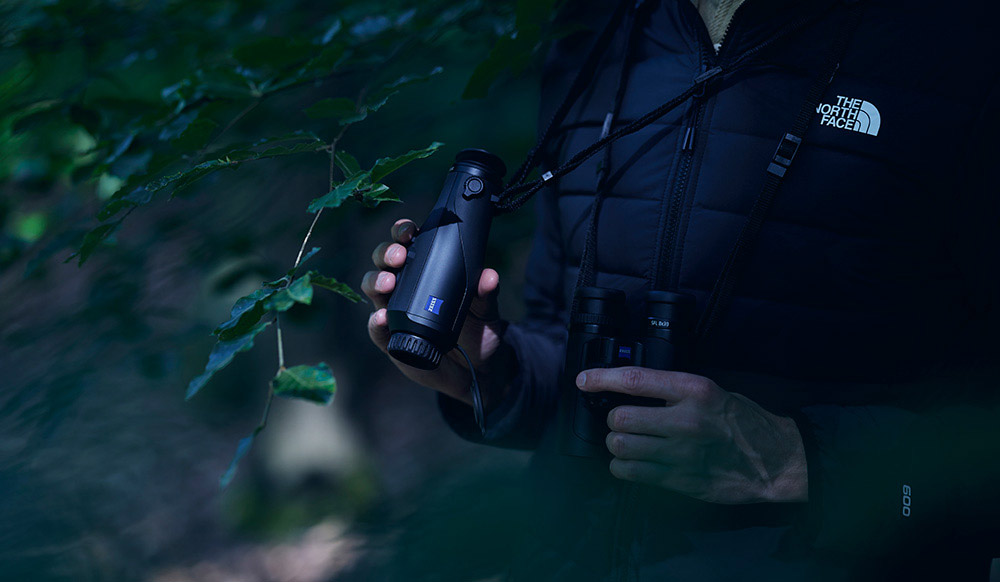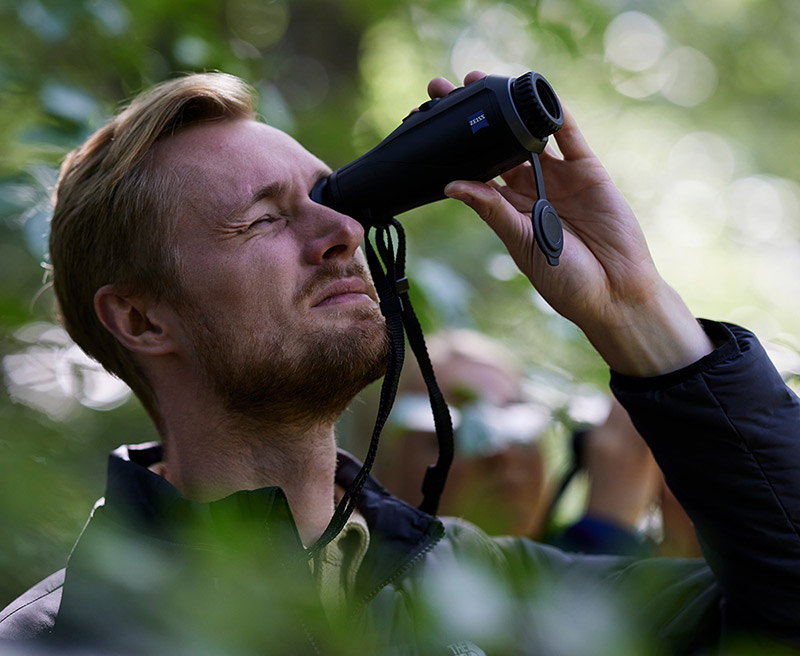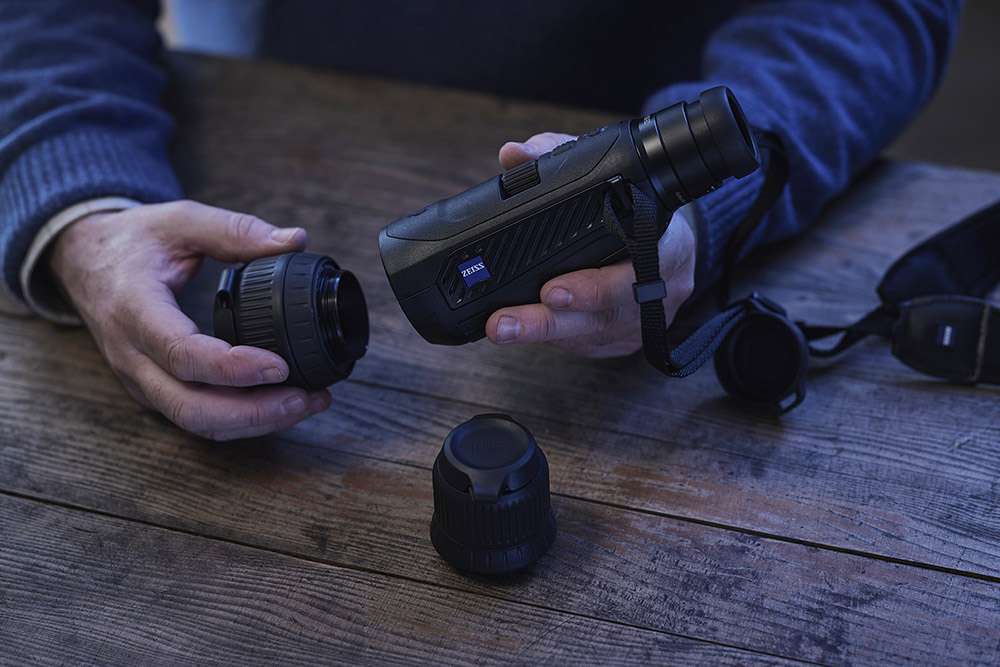- Call us: 01444 237070
- Contact Us
- Stores
- Sign In / Register
-
- Back
- Used Cameras
- Used Lenses
- Used Video
- Used Film Equipment
- Used Stock Alert
- Used Blank Test
- Sell or Part Exchange
- Used Accessories
- Recently Added Used Equipment
- Used Clearance
- Faulty
- Park Picks
- Trade-In
- Blog
- New in
- Call us
- Contact us
- Stores
- Sign in
- Categories
- Tips & Inspiration
- Reviews
- News
- Events
- Features
- Buying Guides
- Competitions
Zeiss Releases New DTI Thermal Imaging Cameras
Many people associate ZEISS with its brilliant selection of third-party camera lenses, which are as powerful as they are popular. However, they specialise in a variety of other industries, tying together their knowledge of optics with all kinds of different applications. One of their most popular ranges, among both enthusiasts and professionals, is its range of wildlife observation scopes.
Building on their selection of ZEISS binoculars (notorious for incredible quality), spotting scopes, trail cameras, and more, ZEISS has introduced four new thermal imaging cameras to suit all sorts of nature lovers, and professionals using them in their work. With new thermal imaging cameras making their way onto the market, now is the perfect time for anyone, from those building their interest in wildlife to teams of conservationists, to get one for themselves.

ZEISS DTI Range
Each model in the new range offers something to any user, from compact bodies like the ZEISS DTI 1 to long-range powerhouses like the DTI 4. As natural game-changers, ZEISS has included no shortage of world-class features that combine usability and performance.
By incorporating ZEISS’s own Signal Image processor into its thermal cameras, heat detection is enabled over extensive ranges, and the details visible in the scope’s display are well-defined. Exclusive features like Transition Zoom and Detection Mode make light work of detecting heat signatures. Even on the outside of the cameras, you can tell that they’re engineered to the highest quality, as the ergonomics applied to each model make them intuitive to use, so read on as we go into detail on what makes them so effective.

ZEISS DTI 1 – small but mighty
Any curious wildlife enthusiast would be thrilled with the ZEISS DTI 1, the most cost-effective thermal camera on the market. This is the most compact of the new releases and is unmatched in usability. Whilst still employing world-class optics from ZEISS engineers and the ergonomics that make this entire range outstanding, it fits snugly into a coat pocket and is perfect for anyone looking for an agile thermal monocular.
This would be equally perfect for entry-level users – this model packs great features like a 1km/1.3km range, 4x magnification, and intuitive operation into a thermal imaging monocular with a highly attractive price. It handles brilliantly for beginners, weighing only 360g and has a battery life of 6.5 hours, which gives any user maximum control. Despite being only 17cm in length, the two focal lengths available allow you to see 1 to 1.32 kilometres away, depending on whether you’re using the 19mm or the 25mm version.

ZEISS DTI 3 Gen 2
Before this huge release of models in the ZEISS DTI series, the first model in its range was the DTI 3. This was an impressive release that demonstrated the powerful results that combining ZEISS’s optics and ergonomics with a handheld thermal camera would produce. It sat in the middle ground as a strong all-rounder for the majority of users, and this has continued with the introduction of the new lineup, as its upgrade, the DTI 3 Gen 2, does exactly that.
This new model has an improved core, with an AMOLED display that provides the user with the best view of ZEISS’s brilliant quality. Aside from the performance, there are plenty of new features to improve the usability of this thermal spotter – the built-in movement alert emits a visual signal when the heat source moves, which is perfect for birders viewing fast-moving subjects. Furthermore, the power consumption on this model is streamlined, as auto-standby turns off the camera as it’s tilted downwards. Lastly, the compass overlay in the display helps you to keep your bearings whilst out, something that users will inevitably find comes in handy.
As with all ZEISS thermal imaging cameras, this model comes with a variety of different focal lengths. You can purchase the ZEISS DTI 3 Gen 2 with a 25mm and a 35mm focal length depending on your needs.

ZEISS DTI 4
The ZEISS DTI 4 can be defined by its key feature – range. Offering the widest range with a maximum viewing distance exceeding 2.6km, this option is perfect for surveying densely overgrown areas, thanks to its highly effective zoom capability. Coupling this with ZEISS’s Picture-in-Picture tool allows you to pick out details across incredible distances. It also harnesses professional features seen in the more advanced DTI 6, with a 640 x 512 sensor; the best that thermal imaging cameras have to offer.
To enable its industry-leading reach, the DTI 4 comes in a 35mm or a 50mm focal length.

ZEISS DTI 6 – best thermal camera?
The ZEISS DTI 6 has by far the best quality and performance available from a ZEISS thermal imaging camera. The only model not unique to their range, this has been a favourite of professionals since 2022.
The feature that makes the DTI 6 leagues above the rest of the range is the ZSIP Pro sensor. Using intelligent image processing algorithms developed in-house by ZEISS, this model produces high-contrast images that are found in no other thermal spotter. The image quality opens up new avenues for thermal camera users, as videos are made available in fantastic resolution.
The design of this choice streamlines the user experience, allowing for optimal performance when out in the field. An exclusive magnification wheel doubles up as a navigation tool, making it easier than ever before to alter settings and respond to your environment. For instance, this model allows you to switch between four observation modes that directly cater to your surroundings. It’s also designed to be highly customisable. Unlike other ZEISS thermal imaging cameras, the lens is interchangeable, so changing your field of view whilst maintaining perfect quality is made possible.
While you can purchase this model with either a DTI 6/20mm or a DTI 6/40mm lens built in, users can purchase a DTI 6 ZB 20mm Lens or a ZEISS DTI 6 ZB 40mm Lens separately.
![]()
How do thermal cameras work?
Thermal vision relies on the principle that all objects emit infrared energy. While this is invisible to the human eye, it’s possible to detect this energy in the same way that a traditional camera sensor detects light, as the only difference between the two is the wavelength.
A handheld thermal camera is equipped with an infrared sensor, which detects the heat signature of all objects in its field of view. ZEISS in particular uses a germanium lens that’s perfectly transparent to infrared radiation. This allows the infrared camera to detect the heat from subjects kilometres away, which is incredibly handy for wildlife observation as it behaves with maximum clarity in pitch darkness, allowing for their application as night vision cameras. Discover more about how thermal imaging cameras work in our article here.
Why use a thermal imaging camera?
When nature is a part of your everyday life, a thermal imaging camera allows you to get the best view of its activities. Whether you’re just curious or dependent on your local wildlife, the perspective that they provide you is impossible to achieve any other way.
Many enthusiasts are so obsessed with the pastime because it gives them a unique view of the world they live in. People are enthralled by being able to watch the hidden movements of nocturnal nature using night vision cameras, especially those for whom wildlife is a central interest. With increased public attention towards our climate, engagement in wildlife observation is mounting, so people’s curiosity about the outside world continues to grow.
While wildlife viewing is a fun experience for most, some rely on it for work. Thermal imaging scopes are the preferred choice by ornithologists, conservationists, surveyors, and more to track the local fauna with maximum precision. If this so happens to be you, ZEISS thermal imaging cameras are a robust and effective choice.
Throughout our history, Park Cameras has been an advocate for nature lovers and has something to offer to all wildlife aficionados. We combine our expertise in photography with a passion for the great outdoors, so we’re dedicated to providing the best thermal imaging cameras, binoculars, spotting scopes, and more, along with the best cameras and lenses to help you capture every moment.
Share this post:
By Thom Pyle on 04/01/2024

Trade in your old equipment
Fast and easy trade in service ensures your old gear is collected efficiently and you are paid quickly! It's very simple to trade in your unwanted photography gear. Just head over to our dedicated Sell or Part Exchange page, fill out the details, and we'll get back to you with an offer for your old gear. Take the cash, or put it towards the cost of your new gear. It's up to you! Find out more
sign up to the newsletter
Keep up to date on the latest photography news, events and offers. Sign up now
